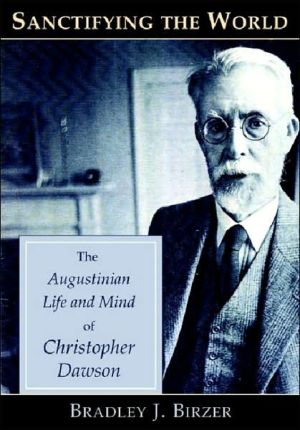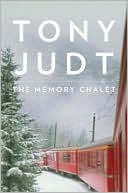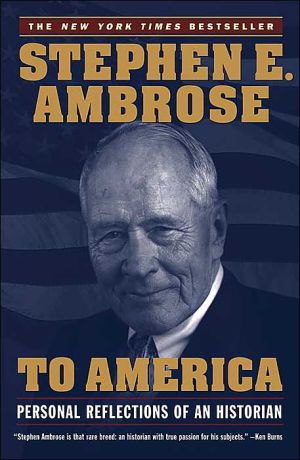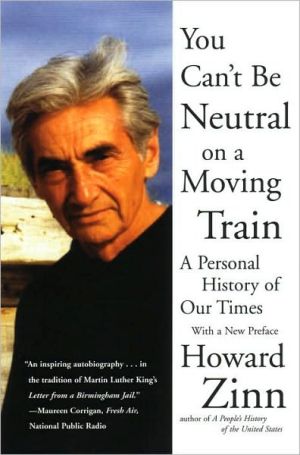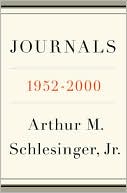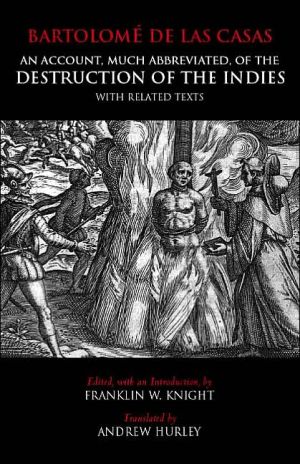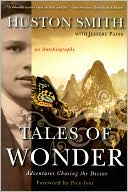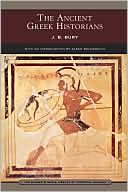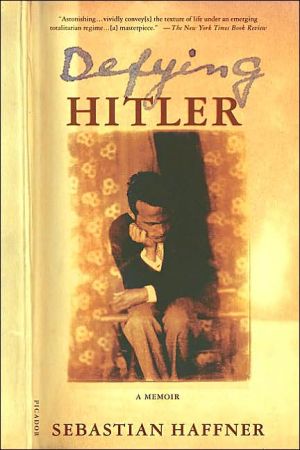Sanctifying the World: The Augustinian Life and Mind of Christopher Dawson
English historian and Christian humanist Christopher Dawson stood at the very center of the Catholic literary and intellectual revival in the four decades preceding Vatican II. One can find his influence throughout the twentieth-century Catholic Right. Poet and social critic T. S. Eliot considered him the foremost thinker of his generation, and the founder of American conservatism, Russell Kirk, wrote that he had been “saturated in Dawsonian historical studies [and] my own books reflect...
Search in google:
English historian and Christian humanist Christopher Dawson stood at the very center of the Catholic literary and intellectual revival in the four decades preceding Vatican II. One can find his influence throughout the twentieth-century Catholic Right. Poet and social critic T. S. Eliot considered him the foremost thinker of his generation, and the founder of American conservatism, Russell Kirk, wrote that he had been “saturated in Dawsonian historical studies [and] my own books reflect Dawson’s concepts.”Dawson’s reputation declined dramatically during the cultural shifts accompanying Vatican II, and few remembered the English Catholic in the final decades of the twentieth century. A revival of interest of Dawson and his body of work increased dramatically in the last years of John Paul II’s and the beginning of Benedict’s pontificates. This book offers the first study of Dawson’s life and thought as a whole. It is especially poignant as a post–9/11 reexamination of the meaning of Western civilization.Sanctifying the World was named by biographer Joseph Pearce as the best book of 2008 and the National Catholic Register named it one of the top eleven books of the year.
Sanctifying the World\ The Augustinian Life and Mind of Christopher Dawson \ \ By Bradley J. Birzer \ CHRISTENDOM PRESS\ Copyright © 2007 Bradley J. Birzer\ All right reserved.\ ISBN: 978-0-931888-86-1 \ \ \ \ Chapter One\ Dawson the Convert\ 1889-1920\ On October 12, 1889, Mary Louisa and Henry Philip Dawson gave birth to a son, Henry Christopher. The blessed event took place in a twelfth-century Welsh castle, known as Hay Castle, in the Wye Valley in Herefordshire. Both the date and the place of his birth are auspicious, steeped in myth and tradition, and bringing together both sides of his family. October 12 was the Feast of St. Wilfrid, an eighth-century bishop of York, the ancestral home of Dawson's father. St. Wilfrid famously stood by Roman Christian customs rather than Celtic ones and convinced many of his brother priests to do the same at a time when the two customs were stridently in opposition to one another. Legend records that St. Wilfrid converted the South Saxons to Christianity, freed numerous slaves throughout the British isles, founded several monasteries in Mercia, and patiently suffered much opposition from his enemies.\ The Influence of Place and Family\ The place is also important, as the castle is connected in popular Welsh memory to a rather mysterious person known as Maude of St. Valery or Matilda of Hay, who supposedly built the castle in a single night while carrying the stones in her apron. But whatever may have happened in the twelfth century, by the late nineteenth century, the castle belonged to Christopher's mother's family. The men of his mother's side, of Welsh decent, had a long tradition of being High Church Anglo-Catholic clergymen, both priests and bishops. His mother's family, therefore, had great standing in the region, which Dawson remembered as "a sort of Anglican theocracy" as "the landowners were largely clergymen and the clergy were either landowners or brothers of landowners, so that there was a complete unification of political, religious, economic and social authority and influence."\ The rural culture into which Dawson was born was very traditional, steeped in many layers of natural and inherited authority. Those around young Christopher reverenced the role and tradition of family, the beauty of nature, the Anglican Church, the Celtic saints and folklore, the Queen, and God. Each of these "layers" represented an ever ascending level of natural authority. In their outlook, political views, cultural influences, and faith, Dawson's family may have been more at home in the early eighteenth century than in the late nineteenth century. But in the late nineteenth century, there was a still a purposefulness and security in the holding of such deep and cherished traditions. "Never perhaps in the history of the world," Dawson reflected in 1926, "has there been a society more secure, more certain of itself and more externally prosperous than that of England in the Victorian age." By the 1940s, though, that security and purpose were gone, and Dawson deeply regretted the loss of the world in which he was raised. "The world and my childhood is already as far away from the contemporary world as it was from the world of the middle ages-in many respects even further," Dawson lamented in the notes to his memoirs. He had been raised in a pre-mechanical world, and, for the sake of the future, he felt compelled to record his experiences as quickly as possible. "If we do not record a lot that used to be taken for granted, it will be lost for good, and the understanding of the past will become even more difficult than it is already," he feared. "Certain ways of human experience will become inaccessible, even to the historic imagination."\ Dawson's beliefs went beyond mere nostalgia. Something had happened between his childhood and the modern world of the early twentieth century. There was at some point a "great divide," a break between the old world and modernity. While ancient and medieval western men seemed to Dawson noble and generally virtuous, modern western man was "an imperialist, a capitalist and an exploiter."\ Dawson did not stand alone in these fears. Romano Guardini, a contemporary of Dawson's, recorded the same process at work while watching one area in Italy, Lake Como, change from a closely-connected rural community tied together by the Church to a region in which rising industry mechanized the community, atomizing one person from another, and destroying the organic nature of society. The greatest change, he argued, came from the modern desire to dominate and exploit nature rather than live with it. Ironically, the human attempt to dominate nature through mechanization had led to the loss of control. "It is destructive because it is not under human control," Guardini wrote. "It is a surging ahead of unleashed forces that have not yet been mastered, raw material that has not yet been put together, given a living and spiritual form, and related to humanity." In his 1954 Cambridge inaugural address, C. S. Lewis said much the same thing. The rise of the machine had fundamentally changed the very nature of the relationship of man to man, man to the world, and man to God. In this brave new world, Lewis argued, "the new most often really is better and the primitive really is the clumsy." The machine, Lewis continued, takes on a religious significance to the poorly educated. "From the old push-bike to the motor-bike and thence to the little car; from the gramophone to radio and from radio to television; from the range to the stove; these are the very stages of their pilgrimage," the Cambridge don concluded. Dawson agreed with both of these sentiments. No person "can look at the history of western civilization during the present century without feeling dismayed at the spectacle of what modern man has done with his immense resources," Dawson wrote. Like his fellow Christian Humanists, Dawson spent much of his scholarly work attempting to uncover and explain the reasons for the break with the past and the development of the modern western man.\ Influenced by his mother's family, and especially by the deep respect he held for his mother, Dawson stood strongly entrenched in the Anglo-Catholic tradition before attending Oxford. Still, he saw significant weaknesses in the Anglo-Catholic position. "It was lacking in authority," Dawson explained. "It was not the teaching of the official church but of an enterprising minority which provided its own standard of orthodoxy." And though Dawson later converted to Roman Catholicism, he admired the Anglican Church for the remainder of his life, crediting it with teaching him the value of the liturgy and the weight of tradition. He once told his closest friend, E. I. Watkin, "that his Anglican education had enabled him to appreciate aspects of Catholicism he might have missed had he been what is now termed 'a cradle Catholic.'" To an interviewer in 1961, he said, "Brought up an Anglo-Catholic, I was always familiar with Catholic books and ideas." While Anglo-Catholics remained distinct from Roman Catholics, seeing Roman Catholics as too fundamentalist, "they were even more completely separatist from the Protestant Nonconformists-The Dissenters." And though the Roman and Anglo mind remained separated, the two had much in common, Dawson believed. One can find Dawson's greatest appreciation for Anglo-Catholicism in his 1933 centenary re-examination of John Henry Newman and his allies, The Spirit of the Oxford Movement.\ Dawson's education was atypical and not always strictly formal. Movement within and exploration of the vast rural landscapes and countryside-especially its churches and shrines-shaped Dawson as much as did his voluminous reading. Indeed, as a young boy, Dawson claimed to have learned more "during my school days from my visits to the Cathedral at Winchester than I did from the hours of religious instruction in school." The countryside came alive for him, as the mythic Celtic past seemed to weave itself through the land, the faith, and the books. "What David Jones called his 'Celticity,'" Dawson's close friend Harmon Grisewood remembered, "gave Christopher insights and a poetic appreciation both of nature and history which is often lacking in one whose ancestry is wholly English."\ From his mother's family, he inherited a love for myth, the tradition of the saints, and the necessity of beauty in its many forms. Dawson remembered that his mother repeatedly told the story of "Bran the Blessed, the mythical ancestor of the Holy Families of Wales-the story of the Lodestone river and the saying 'He who will be chief, let him be a bridge.'" Though a giant, pagan king, Bran, whose name means "Raven," earned his title "the Blessed" as the one who, in many tales, first introduced Christianity to the Irish. Needless to say, Butler did not include an entry for Bran the Blessed in his multi-volume Lives of the Saints.\ Dawson's mother's hagiographic and mythological stories must have shaped his outlook on the world profoundly. Even Dawson's first fictional story, written when he was only six, tellingly involved a battle between Christians and heathens. This became a theme that would pervade every one of his non-fictional writings. From the mythical lives of heroes and gods, Dawson turned to the real lives of the Catholic saints. "From the time that I was thirteen or fourteen, I had come to know the lives of the Catholic saints and the writings of the medieval Catholic mystics," Dawson wrote, "and they made so strong an impression on my mind that I felt that there must be something lacking in any theory of life which left no room for these higher types of character and experience."\ More than anything else, though, Dawson felt the continuity of tradition and the far-reach of family on his mother's side. Such an intellectual and spiritual familial inheritance was a burden as much as a gift. This maternal patrimony would haunt and shape him all of his life. At Hay, Dawson felt "the immense age of everything, and in the house, the continuity of the present with the remote past, and the feeling was reinforced by the fact that nothing had changed since my mother had been a child in the same house and that all the family relations existed in duplicate, so that alongside of my parents, my nurse, and my uncles and aunts, I saw my mother's parents and her nurse and her uncles and aunts." It should not surprise anyone a century later to recognize that when Dawson encountered the rapidly changing modern and urban world, in love with its own inventions and cleverness, he correctly believed himself a man displaced in time. Some scholars, not totally without justification, have accused Dawson of allowing nostalgia to color his history and philosophy. Certainly, Dawson must have longed at times for an ideal and mystical Celtic past. One can readily imagine not only Bran the Blessed and Saint Dafyd, the first bishop at Glastonbury, running through the faith and mythic scapes of young Christopher's mind, but a Celtic King Arthur as well.\ If Christopher's mother provided the imaginative side, his father provided the discipline and intellect. Most of the men of his father's side, almost all from Yorkshire, had been military men. Patriotism and faith mingled comfortably in Dawson's family, and both sides were intellectually curious and acute. But this was especially true of Dawson's father, who had, for example, founded a Dante study group while in the Army. "His admiration for Dante had no limits," Dawson wrote. He considered him "the world's one perfect poet. This love of Dante no doubt stimulated his interest in Catholicism and helped to dispel the Protestant prejudices of his upbringing." His father was also an adventurous soul, having traveled to South America when it was still a treacherous and undeveloped place and having served as the lead British officer in the famous 1882-1883 International Circum-Polar Expedition.\ An Unusual Education\ Upper-middle class, both sides of Dawson's family deeply cherished tradition and conservatism, and both sides greatly valued rural and agrarian life. "Neither my parents nor their parents nor theirs-almost ad infinitum-ever lived in a town," Dawson wrote in the late 1940s, "and I find it exceedingly difficult, not merely uncongenial but unnatural, to do so myself." Distrust of urban areas and masses of men would haunt Dawson for his entire life and greatly shape many of his views on culture, politics, and society. In 1961, he told a reporter that living in cities was dangerous for one's health and one's soul. The city merely distracts the person, Dawson believed. "A man has no room for a library in a city apartment and no time to use it if he had one." These distractions and desire for constant material gain force men to compete in "the rat race" of life and are "always tempted to conform to lower standards of secular culture that they see around them." Indeed, his greatest regret in taking the job at Harvard in 1958, Dawson admitted, was leaving the rural countryside of England. "I've always been a countryman," he told a Newsweek reporter. "So was my father, grandfather, and great-grandfather. I shall hate to go."\ His parents initially sent him to a prestigious Anglican school, Winchester. Poor health got the best of Dawson, and his parents removed him from the school after only a brief stay. He also considered Winchester as a threat to his own family traditions, "hostile to culture and historic and religious tradition." Further, the religion taught at Winchester, as opposed to that learned and gleaned in his own home, "was more ethics than religion, and a haze of vagueness and uncertainty hung around the more fundamental articles in Christian dogma." Modernism had clearly infected the teachings at Winchester.\ That aside, formal education never suited Dawson's restless and imaginative mind. "I got nothing from school, little from Oxford, and less than nothing from the new post-Victorian urban culture," Dawson wrote in the 1920s. "All my 'culture' and my personal happiness came from that much-derided Victorian rural home life." And, yet, his schooling must have left a certain impression on him, even if Dawson was too close to it to recognize it. Robert Speaight, Dawson's associate editor at the Dublin Review in the early 1940s, remembered Dawson in not always favorable terms. "Winchester and New College were written all over his scholar's stoop, tired intonations, and frail physique, and you were imperceptive if you did not discern an underlying toughness of mind and character." Speaight had it wrong though, as Dawson studied at Trinity College, not New College. Still, the stereotype must have been evident in Dawson to some degree, or Speaight would not have remembered it twenty-five years later.\ After the failure at Winchester, Dawson's parents had him schooled by a private tutor at Bletsoe in Bedfordshire, England, in 1905. This form of education seemed to suit Dawson much better. "He spent his time out of doors and in deep and varied reading," Maisie Ward wrote in a mini-biography of Dawson. "The tutor left his pupils largely to their own devices: he could hardly have done better." A half century later, Dawson wrote that private tutoring must always be superior to high school. Many great thinkers, he must have noted with some satisfaction, had received a private or home-schooled education. Perhaps most important, Dawson met his closest friend, E. I. Watkin, also privately tutored at Bletsoe.\ At first, the two disliked one another vehemently. Dawson had entered a rationalist phase and, during an argument with the decidedly more Christian Watkin, Watkin lost his temper, and "forced the back of his garden chair down upon" Dawson's head. Such passion, though manifested with boyish violence at first, soon proved the beginning of serious, intellectually-driven, life-long friendship. The two men, to varying degrees, would greatly influence one another for the entirety of their adult lives. As Dawson later remembered, he and Watkin were as two sides of the same coin: "I am a Latin, he is a Greek." Watkin was impressed not only with Dawson's vast and penetrating intellect but also with Dawson's love of beauty, inherited from his Welsh ancestry.\ The two continued to strengthen their already rather deep friendship at Oxford and, for a time, even shared rooms together. Watkin remembered in his diary that the two often stayed up late into the night discussing any and every thing of intellectual and poetic value. As they talked, Dawson's art collection-paintings of Christ, Socrates, and Charles I-watched over them. During their many discussions, Dawson grew especially intrigued with Watkin's Roman Catholicism and the faith Watkin had accepted in 1908. Dawson remembered the time and conversations with Watkin as especially influential. "I'd always been fond of Dante. He was my father's favorite poet," Dawson stated in an interview in 1961. But through conversation with E. I. Watkin, "I became absorbed in the theocratic philosophy of history-St. Augustine, Dante, and de Maistre." St. Augustine provided Dawson with a theological and philosophical understanding of history; Dante provided Dawson with a mythical, metahistorical understanding of the Church within western civilization; and Joseph de Maistre, a refugee in Tzarist Russia, fleeing the French Revolution, taught Dawson the meaning of organic community and fear of revolutionary and mass democratic fervor.\ (Continues...)\ \ \ \ \ Excerpted from Sanctifying the World by Bradley J. Birzer Copyright © 2007 by Bradley J. Birzer. Excerpted by permission.\ All rights reserved. No part of this excerpt may be reproduced or reprinted without permission in writing from the publisher.\ Excerpts are provided by Dial-A-Book Inc. solely for the personal use of visitors to this web site. \ \
Foreword vPreface viiContents xvIntroduction 1Dawson the Convert, 1889-1920 15The Influence of Place and Family 15An Unusual Education 20The Path to Conversion 22The Making of a Man of Letters 27Little Platoons, 1920-1930 43LePlay House 43Order Men 48An Augustinian Vision of History 63An Augustinian Metahistory 70Homo Religiosus 75Language, Profane and Mundane 84Sanctifying the Pagan 91Essays in Order, Humanism, and Moots, 1931-1940 97Essays in Order 97Colosseum 114A New Review 117The Moot 120Against the Ideologues, 1930-1942 123"Age of Propaganda" 126The First Institution: Family 134The Particular or the Universal 135Beyond Liberalism: The New Leviathan 137"Progressive" National Socialism and the Abyss 142No Fascist: Beyond Ideologies 146What isthe West? 151The Birth of the West: Greece and Rome 154The Birth of European Christendom 162The Achievements of the Medieval Period 168The Protestant Reformation 176The Dublin Review, The Sword of the Spirit, and a Post-War Catholic Order, 1940-1946 187The Dublin Review 187The Sword of the Spirit 193The Increasing Strain 204Recovering the West: Programs in Christian Culture, 1945-1962 215The Makers of Christendom 218Program for Christian Culture 223Christian Humanism and the Liberal Arts 230Specifics of Dawson's "Christian Culture" Studies 233A Lay Apostolate for the Intellect 240Prospects for Reform 241The Legacy of Christopher Dawson 245A Catholic Scholar at Harvard 246Retirement 253The Legacy of Christopher Dawson 255Conclusion: The Human Person and the City of God 265A Note on Archival Materials 273Bibliography 275Index 302
